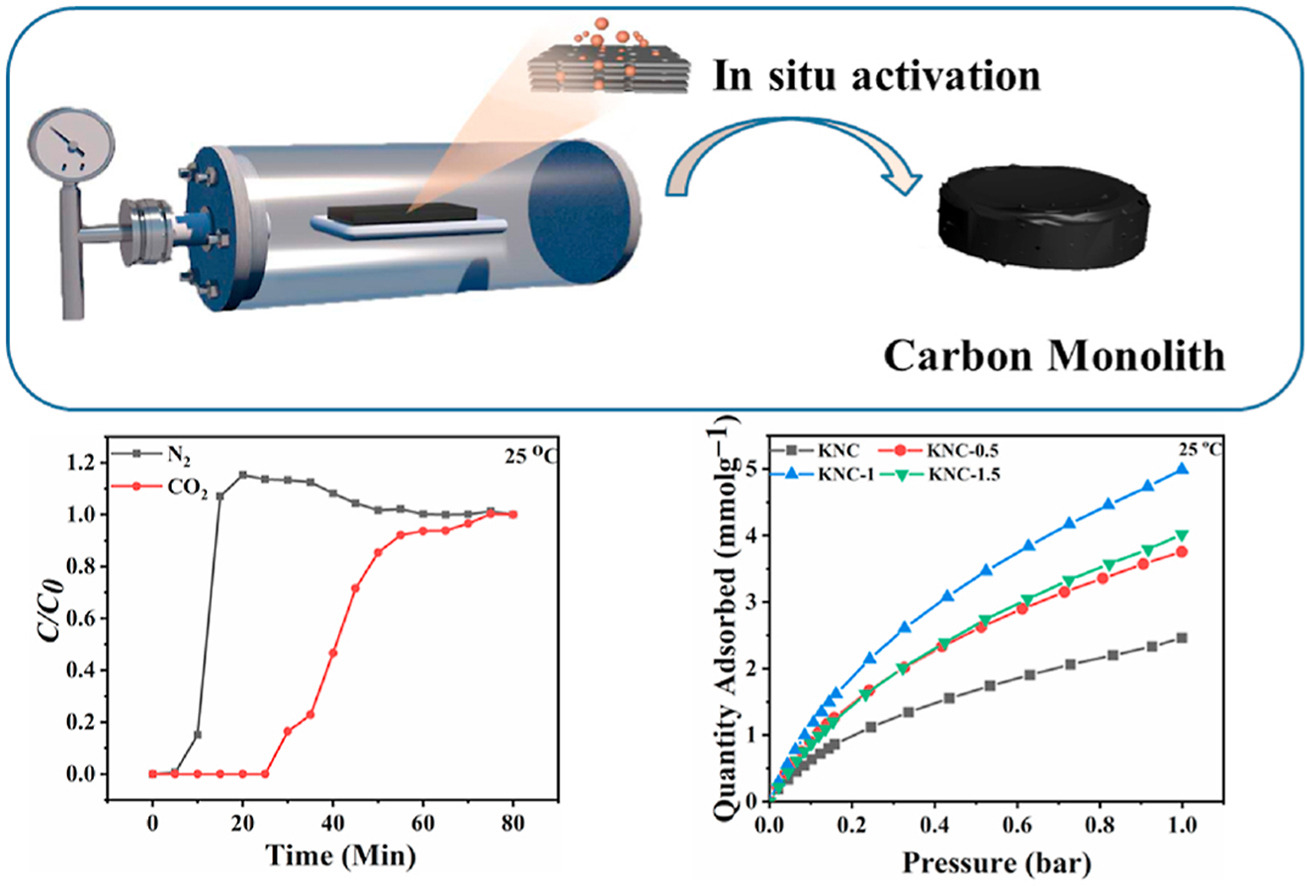High yield nitrogen-doped carbon monolith with rich ultramicropores prepared by in-situ activation for high performance of selective CO2 capture
发布时间:2024-09-30
点击次数:
DOI码:10.1016/j.carbon.2021.05.029
所属单位:中南大学
发表刊物:Carbon
关键字:Adsorption; CO2 capture and separation; GCMC simulation; Nitrogen doped carbon
摘要:Constrained by the unsatisfactory physical adsorption capacity and the low carbon yield from chemical activation, practical utilization of carbon materials for CO2 capture and separation (CCS) remains a huge challenge. Herein, we proposed a novel in-situ activation methodology to prepare a category of porous carbon monoliths in which the potassium ion activation sites are evenly introduced through acid-base reaction, contributing to the high carbon yield, abundant ultramicropores as well as rich nitrogen content. Tested at adsorption temperatures of 0, 25 and 40 °C, the as-prepared carbon monoliths display remarkable static CO2 uptake (7.1, 5.0 and 3.7 mmol/g, respectively) and excellent selective adsorption ability in dynamic breakthrough experiment with a binary mixture of CO2/N2 (68, 63 and 67, respectively). Along with the experiments, the CO2 adsorption mechanism was determined by calculating the adsorption density and adsorption energy on slit pore with various pore sizes and surface functionalities using grand canonical Monte Carlo (GCMC) simulation. The narrow micropores can significantly and effectively increase the CO2adsorption capacity, while the functional groups played the second role.
论文类型:期刊论文
卷号:181
页面范围:270 - 279
ISSN号:00086223
是否译文:否
发表时间:2021-08-30
收录刊物:SCI
发布期刊链接:https://www.sciencedirect.com/science/article/pii/S0008622321005236?via%3Dihub

